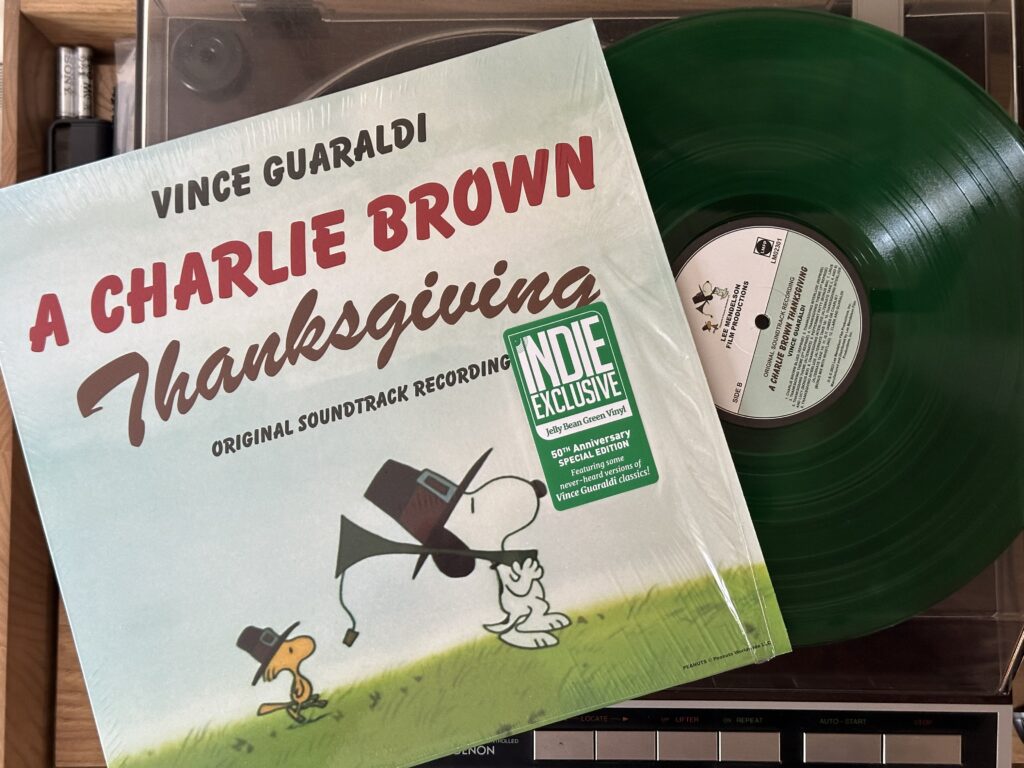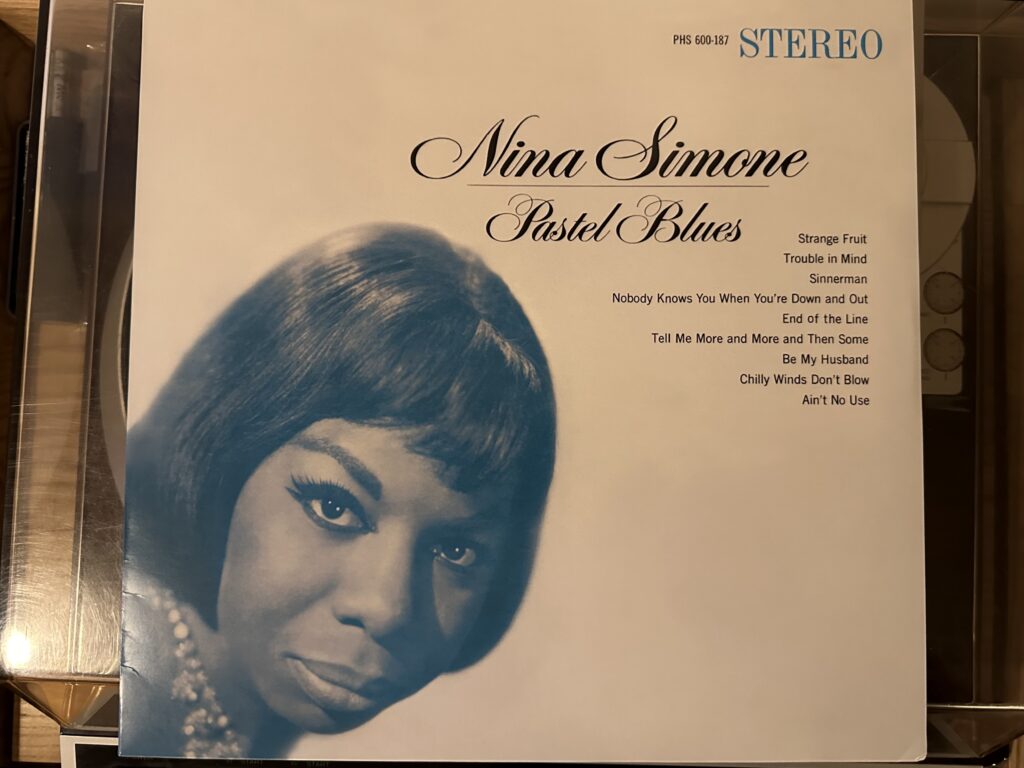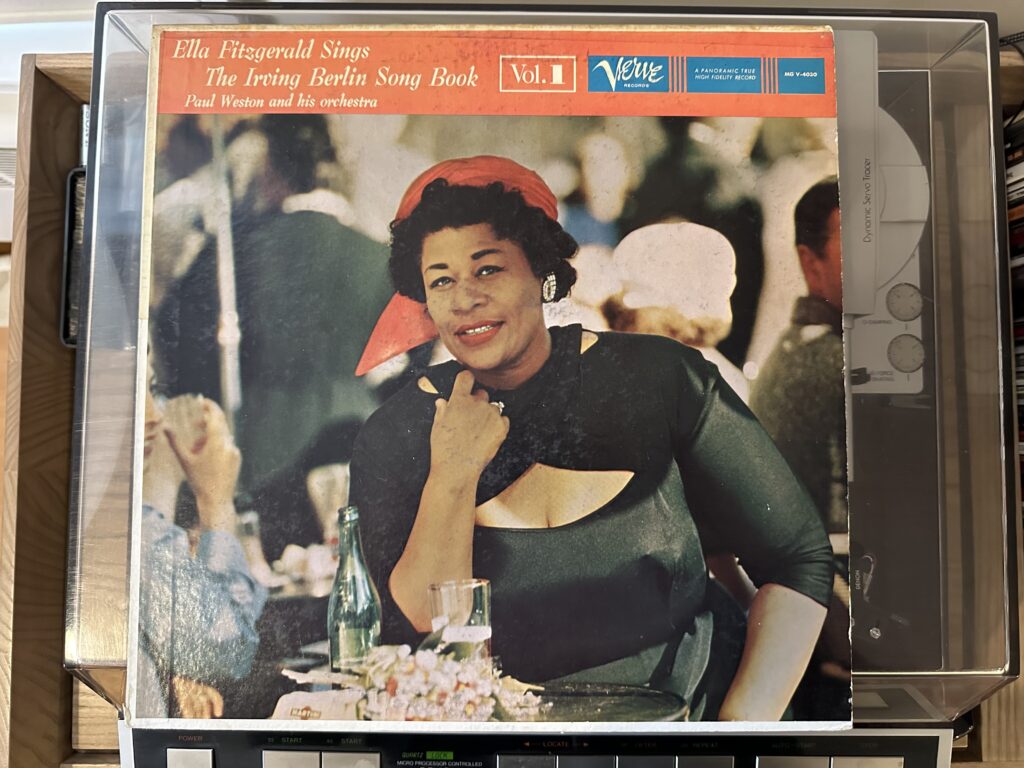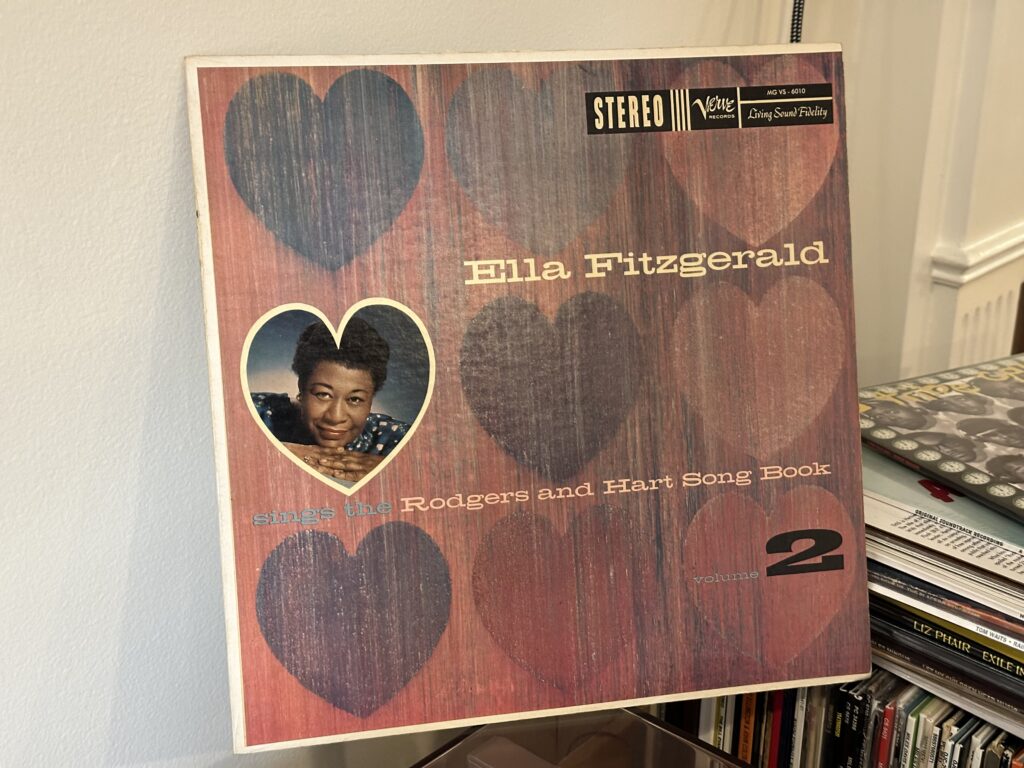
Album of the Week, November 25, 2023
Growing up, there were three Charlie Brown holiday specials that stood atop the podium of my favorite TV shows. At the top, A Charlie Brown Christmas. In the silver medal position, It’s the Great Pumpkin, Charlie Brown. There were plenty other contenders for that last place on the podium, including It’s the Easter Beagle, Charlie Brown (that hi-fi set in Woodstock’s birdhouse!) and It’s Christmastime Again, Charlie Brown (“Slouching towards Bethlehem, sir?”). But the third place on the podium (or maybe the second, depending on my mood) is A Charlie Brown Thanksgiving.
At this point in the specials, they were still collections of bits from the strips (Lucy pulling away the football makes an appearance at the beginning), combined with more well developed stories. So we get Snoopy and Woodstock (in his first animated appearance) as pilgrims, but we also get Linus inventing the first Friendsgiving, an early animated appearance of Franklin, the first animated appearance of Marcie, and more toast and jelly beans than you can shake a stick at.
You also get some superb Vince Guaraldi jazz. At this point, Guaraldi had been scoring Peanuts animated specials for nine years, and what started out as a trio had increasingly expanded in scope and sound. The joy was still there, as was the cool; what showed up on this record was horns! And vocals! And Fender Rhodes!
But it’s the mellow that shows up first, and this fully acoustic rendition of the “Charlie Brown Blues” is relaxed and maybe just a little bit funky, and appetizingly brief. It’s followed by the “Thanksgiving Theme,” in its first incarnation a ten-second tag played by Guaraldi on the acoustic piano—a series of inverted arpeggios that in lesser hands would be a finger exercise but here play out like a noble fanfare in 6/8 time. The theme is immediately reprised, with the first appearance of that Fender electric piano with the full trio (Seward McCain on bass, Mike Clark on drums), in which we hear the full theme including the bridge, played on Fender with a pretty heavy echoplex effect. It sounds like bells and is gorgeous.
Speaking of first appearances, at least in holiday-themed specials, we have Peppermint Patty, who gets her own theme. Her theme is more foursquare than the Thanksgiving theme, and just as with the character, soon spirals into hijinx, here courtesy of a flute solo over a funky obligato signaling the overhead flight of Woodstock.
Which brings us to “Little Birdie.” I first became aware of this song as a composition in its own right (rather than a bit of soundtrack behind the funniest series of sight gags in the special as Snoopy and Woodstock fight with the ping-pong table and chairs) courtesy of Wynton Marsalis’s Joe Cool’s Blues, in which the Ellis Marsalis Trio augmented by a full horn section and vocalist Germaine Bazzle turned in a funky performance of the tune. But the original version heard on this soundtrack is plenty funky in its own right, thanks to the horn section (trumpeter Tom Harrell arranged the brass, of whom Chuck Bennett is the only other credited player) and the vocals. I had long assumed a jazz singer (Lou Rawls, say) had popped up on the track; imagine my delight when it turns out that Guaraldi himself sang the tune! The song captures the interplay between Snoopy and Woodstock perfectly.
The “Thanksgiving Interlude” follows, followed by “Is it James or Charlie?,” featuring an uncredited but tasty guitar solo over a series of vamping chords that does nothing so much as continue the mood of the earlier pieces as Charlie Brown’s friends arrive. Linus’s arrival to help cook the popcorn and toast is signaled by the only appearance in the special of the classic “Linus and Lucy” theme, here augmented by brass.
The only composition by orchestrator John Scott Trotter (who did some of the instrumental bits in It’s the Great Pumpkin, Charlie Brown), the “Fife and Drums Theme” is what it says on the tin, albeit augmented by electric bass and funky keyboards.
The rest of the special is soundtracked by reprises of the themes we’ve already heard: “Charlie Brown Blues,” the “Thanksgiving Interlude” and two reprises of the “Thanksgiving Theme” follow in pretty rapid succession. The rest of the record is rounded out by alternate takes of the different tunes, some of which (“Is It James or Charlie? (Bonus Mix with Whistling)”, “Thanksgiving Interlude (Alt Take 14)”) are noteworthy all by themselves; others (“Clark and Guaraldi”) are tantalizing glimpses into the process of putting the record together in the studio.
A note about the record: issued this year, this soundtrack recording of A Charlie Brown Thanksgiving almost wasn’t; it was never issued as a standalone album before now, and some of the tunes were included on compilations with the special effects tracks over them, as that was the only way they survived. When Peanuts producer Lee Mendelson passed away in December 2019, his children began looking through his house for material related to the Peanuts specials, uncovering the original session tapes for this album as well as It’s the Great Pumpkin, Charlie Brown. It’s a miraculous discovery; without the effects track, the tunes stand out as warm and friendly, yet deeply funky. One wonders what Guaraldi would have gone on to do had he not passed away unexpectedly three years later from a sudden heart attack. Next time we’ll hear where Guaraldi’s journey with Charles Schulz’s characters really hit its stride.
You can listen to today’s album here:



